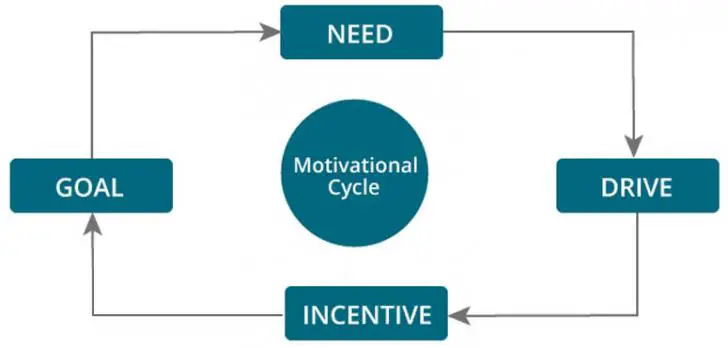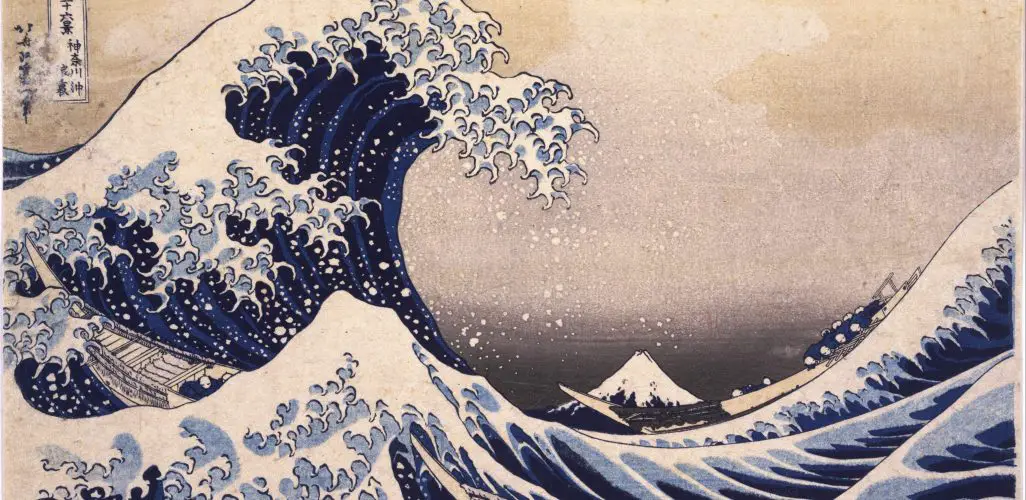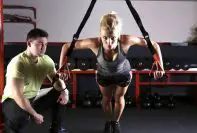Motivation cycle is a transition of states within an organism that propels the organism toward the satisfaction of a particular need, where motivation itself is considered a hypothesized state. Psychologists use the concept of need to describe the motivational properties of behavior.
The state of motivation is further comprised of four different states, which takes place in an organism to drive him towards each action. Each action is first initiated because of a particular need. The need drives the person into taking actions. Positive results, caused due to the actions, further acts as an incentive motivating a person towards the goal. But the individual can never stop after achieving a certain goal, and this phenomenon continues on and on. This phenomenon has been termed as Motivational Cycle.

Need
A need is lack or deficit of some necessity. It’s a state of physical deprivation that causes tension within an organism. The tension caused when the organism is deprived of basic necessities of life as food, water, and sleep, causes the internal environment of an organism to be imbalanced. The imbalance caused by the need arouses the organism to maintain its balance. For any goal directed behavior, need is the first condition or stimulating factor.
Drive
Need leads to drive, which is the second step towards achieving goal. Drive can be defined as the state of tension or arousal produced by need. The drive can also be considered as the original source of energy that activates an organism. For instance, when an organism is hungry and/or thirsty, the organism seeks to reduce this drive by eating and/or drinking.
Drive acts as a strong persistent stimulus to push an organism towards its goal. It is the state of heightened tension leading to restless activity and preparatory behavior.
Incentive
The object of the environment that activates, directs, and maintains behavior is called incentive. It can be anything as long as it has either positive or negative value in motivating behavior.
The incentive theory rests on the assumption that the behaving organism is well aware of his actions and the consequences received as a result. The theory also understands incentives as the motivation, which a person has to achieve any particular goal object. The motivated behavior is directed towards incentive and getting closer to the incentive provides satisfaction of the aroused drive.
For example: behavior like eating food is an incentive that reduces the drive of the person caused by the need to fulfill his hunger. The reduction of behavior then cuts off and restores balance in an organism.
According to Hilgard,
The incentive is something in the external environment that satisfies the need and thus reduces the drive through consummative activity.
Goal
The reduction of tension in the body can be considered as the goal of any motivated behavior. Let’s go back to the example of a hungry man. A hungry man eats food, and his body restores to a balanced condition. This then reduces the tension. This reduction of tension as a result of an energized activity is called goal. Once the goal has been completed, the organism is again ready for another goal-motivated behavior.
Goals might be both positive or negative. Positive goals are the ones that an organism tries to attain, such as sexual companionship, food, victory etc. negative goals are the ones that an organism tries to escape from or avoid, such as embarrassing situations, punishments
These four steps continue on and on throughout the life-course of an organism. Because the needs are never ending, it leads to drive, which then lead to incentive and the goal.
For Example: The motivational cycle of the hungry man is over once when he eats and the goal is satisfied. But, the cycle will restart once the man gets hungry again. The cycle goes on and on only to end at the demise of an organism, at which point, the needs permanently stop. Motivational cycle means that behavior goes on in a sequence. Often times, a single motivated behavior can also fulfill multiple needs.




